Fatigue Crack Growth Rate of the Long Term Operated Puddle Iron from the Eiffel Bridge
Abstract
:1. Introduction
2. Material Investigations
3. Fatigue Crack Growth Rate Test Results
- Controlled increase of the ΔK amplitude; and
- constant amplitude of the ΔF parameter (force range).
- Registration of F-COD values during proper load cycles;
- splitting of the F-COD line into two parts (i.e., nonlinear and linear) by fitting a first-order polynomial function (with two constants: A0, A1) for the linear part and a second-order polynomial function (with three different constants: B0, B1, and B2) for the nonlinear one; and
- adjustment of the constants of the second-order function by minimizing the sum of squared errors of the prediction squares (or residual sum of squares—RSS).
Fatigue Crack GROWTH Rate Curves for Eiffel Bridge Puddle Iron
4. Mixed-Mode Fatigue Crack Propagation Behaviour (Crack Inclination Angle, α = 30°)
5. Concluding Remarks
- The Paris’ [16] exponent, m (slope of the FCGR curve), for Eiffel Bridge steel is significantly higher than for modern bridge constructional steel, even for the early 20th century steel;
- the observed fatigue crack closure phenomenon strongly influence the kinetics of fatigue crack growth in the tested puddle iron (decreases the Paris’-m exponent and consolidated data from different R-ratios into one curve); and
- under a mixed mode condition (I + II), a significant R-ratio influence was observed.
Author Contributions
Funding
Conflicts of Interest
References and Note
- Helmerich, R. Alte Stähle und Stahlkonstruktionen. Materialuntersuchungen, Ermüdungsversuche an Orginalen Brükenträgern und Messungen von 1990 bis 2003; Bundesanstalt für Materialforschung und Prüfung (BAM): Berlin, Germany, 2005. (In German)
- Cremona, C.; Patron, A.; Johansson, B.; Larsson, T.; Eichler, B.; Hóhler, S. Improved Assessment Methods for Static and Fatigue Resistance of Old Steel Railway Bridges. Background Document D4.6, Final Draft 30.11.2007. In “Sustainable Bridges—Assessment for Future Traffic Demands and Longer Lives” Project TIP3-CT-2003-001653 (2003-12-01–2007-11-30) Co-Founded by the European Commission within the Sixth Framework Programme (2002–2006).
- Hołowaty, J. Assessment of Structural Steel’s Properties in a Railway Plate Girder Bridge. Struct. Eng. Int. 2017, 27, 441–448. [Google Scholar] [CrossRef]
- Hołowaty, J. Toughness tests on steels from old railway bridges. Procedia Struct. Integr. 2017, 5, 1043–1050. [Google Scholar] [CrossRef]
- Wichtowski, B.; Hołowaty, J. Assessment of fatigue limits in historical welded railway bridges in Poland. Procedia Struct. Integr. 2017, 5, 1035–1042. [Google Scholar] [CrossRef]
- Sieber, L.; Stroetmann, R. The brittle fracture behavior of old mild steels. Procedia Struct. Integr. 2017, 5, 1019–1026. [Google Scholar] [CrossRef]
- Lesiuk, G.; Szata, M.; Bocian, M. The mechanical properties and the microstructural degradation effect in an old low carbon steels after 100-years operating time. Arch. Civ. Mech. Eng. 2015, 15, 786–797. [Google Scholar] [CrossRef]
- Lesiuk, G.; Kucharski, P. Inicjacja wzrostu pęknięć w długotrwale eksploatowanych stalach mostowych z punktu widzenia metod energetycznych. TTS Technika Transportu Szynowego 2015, 22, 920–927. [Google Scholar]
- Lesiuk, G.; Szata, M.; Correia, J.A.; De Jesus, A.M.P.; Berto, F. Kinetics of fatigue crack growth and crack closure effect in long term operating steel manufactured at the turn of the 19th and 20th centuries. Eng. Fract. Mech. 2017, 185, 160–174. [Google Scholar] [CrossRef]
- Lesiuk, G.; Correia, J.A.; De Jesus, A.M.P.; Kucharski, P. Fatigue crack propagation behavior of old puddle iron including crack closure effects. Procedia Struct. Integr. 2016, 2, 3218–3225. [Google Scholar] [CrossRef] [Green Version]
- Raposo, P.; Correia, J.A.F.O.; De Jesus, A.M.P.; Calçada, R.A.B.; Lesiuk, G.; Hebdon, M.; Fernández-Canteli, A. Probabilistic fatigue S-N curves derivation for notched components. Frattura ed Integrità Strutturale 2017, 42, 105–118. [Google Scholar] [CrossRef]
- ASTM E407-07(2015)E1 Standard Practice for Microetching Metals and Alloys; ASTM International: West Conshohocken, PA, USA, 2015. [CrossRef]
- PN-EN ISO 6507-1:2007: Metale. Pomiar Twardości Sposobem Vickersa—Część 1: Metoda Badania; Polski Komitet Normalizacyjny: Warszawa, Poland, 2007.
- ASTM E647: Standard Test Method for Measurement of Fatigue Crack Growth Rates, Annual Book of ASTM Standards; ASTM: West Conshohocken, PA, USA, 2000.
- Elber, W. Fatigue crack closure under cyclic tension. Eng. Fract. Mech. 1970, 2, 37–45. [Google Scholar]
- Paris, P.C.; Gomez, M.; Anderson, W.E. A rational analytic theory of fatigue. Trend Eng. 1961, 13, 9–14. [Google Scholar]
- Richard, H.A. Bruchvorhersagen bei Überlagerter Normal- und Schubbeanspruchung von Rissen; VDI Forschungsheft 631; VDI-Verlag: Düsseldorf, Germany, 1985; pp. 1–60. (In German) [Google Scholar]
- Lesiuk, G.; Kucharski, P.; Correia, J.A.; De Jesus, A.M.P.; Rebelo, C.; da Silva, L.S. Mixed mode (I + II) fatigue crack growth in puddle iron. Eng. Fract. Mech. 2017, 185, 175–192. [Google Scholar] [CrossRef]
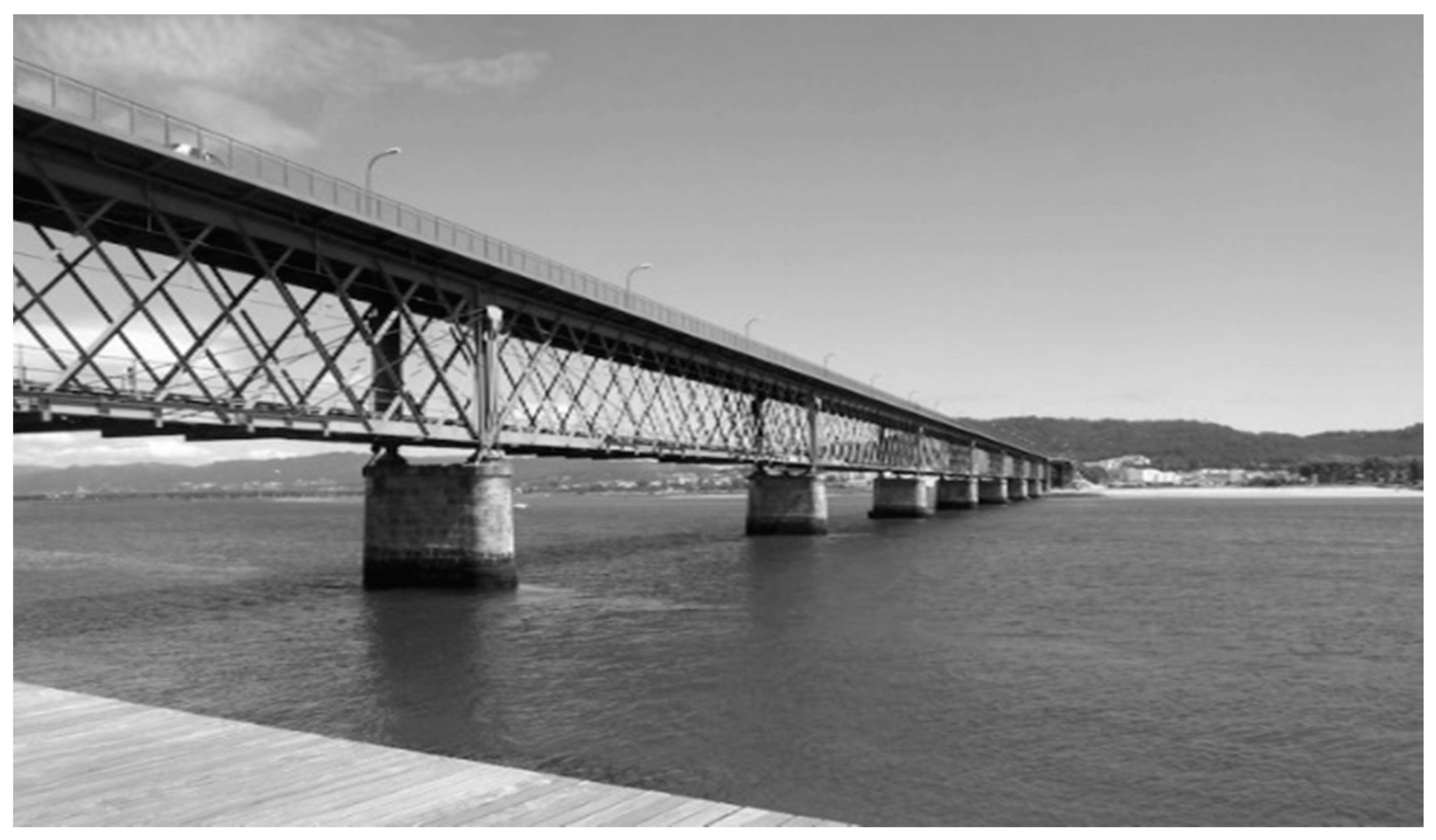
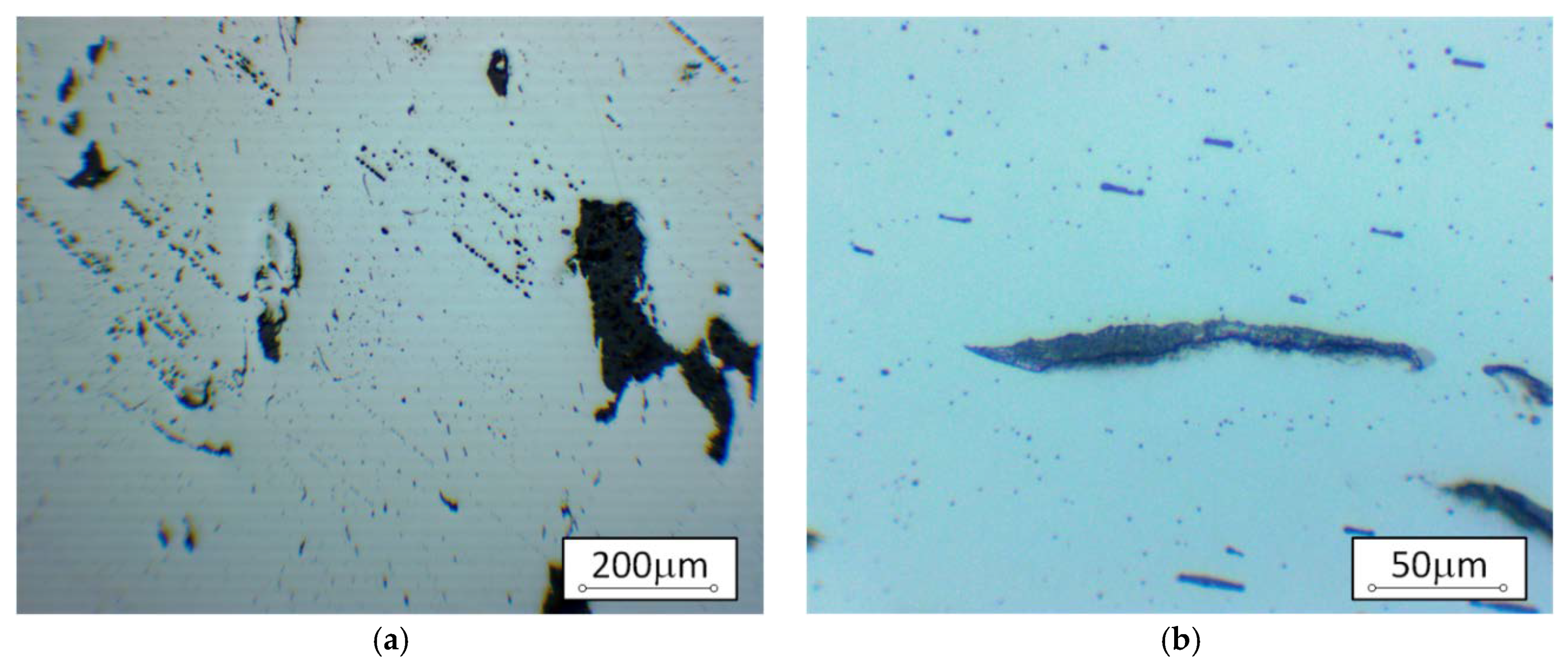

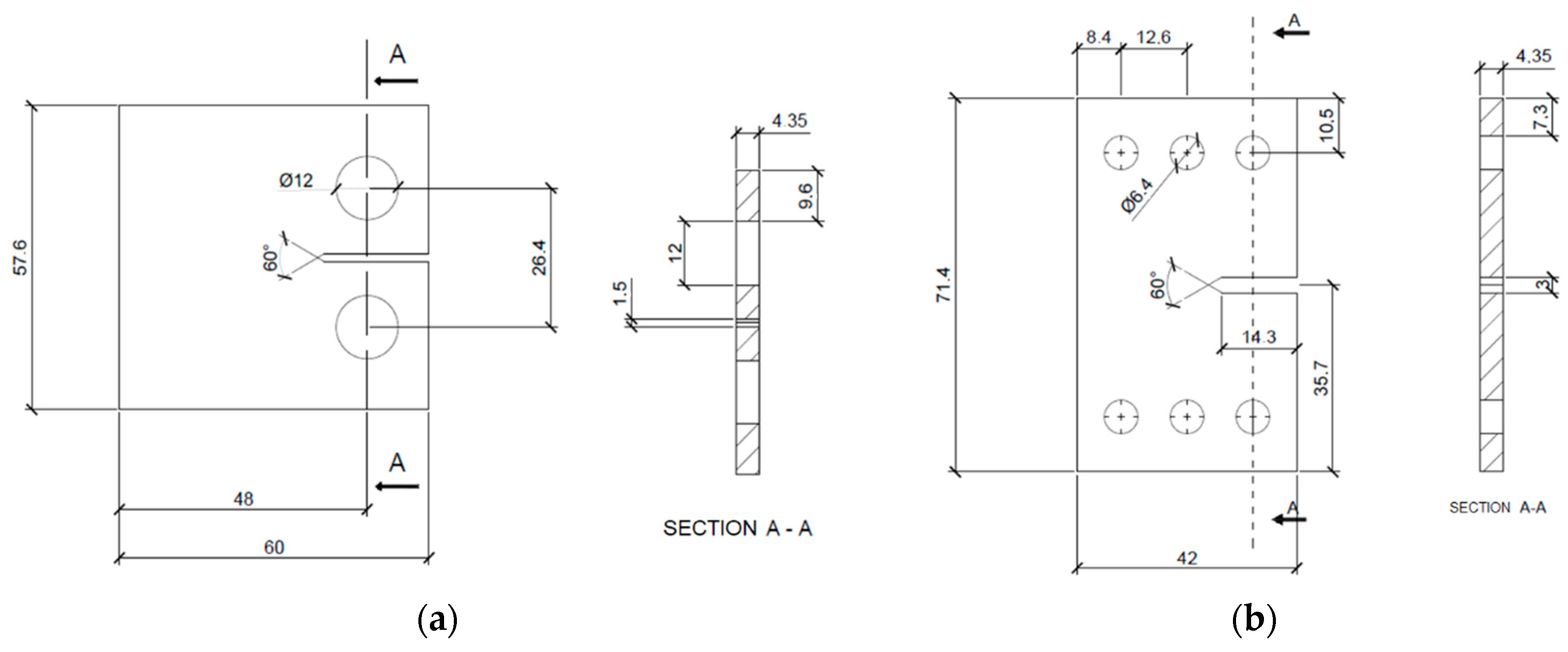
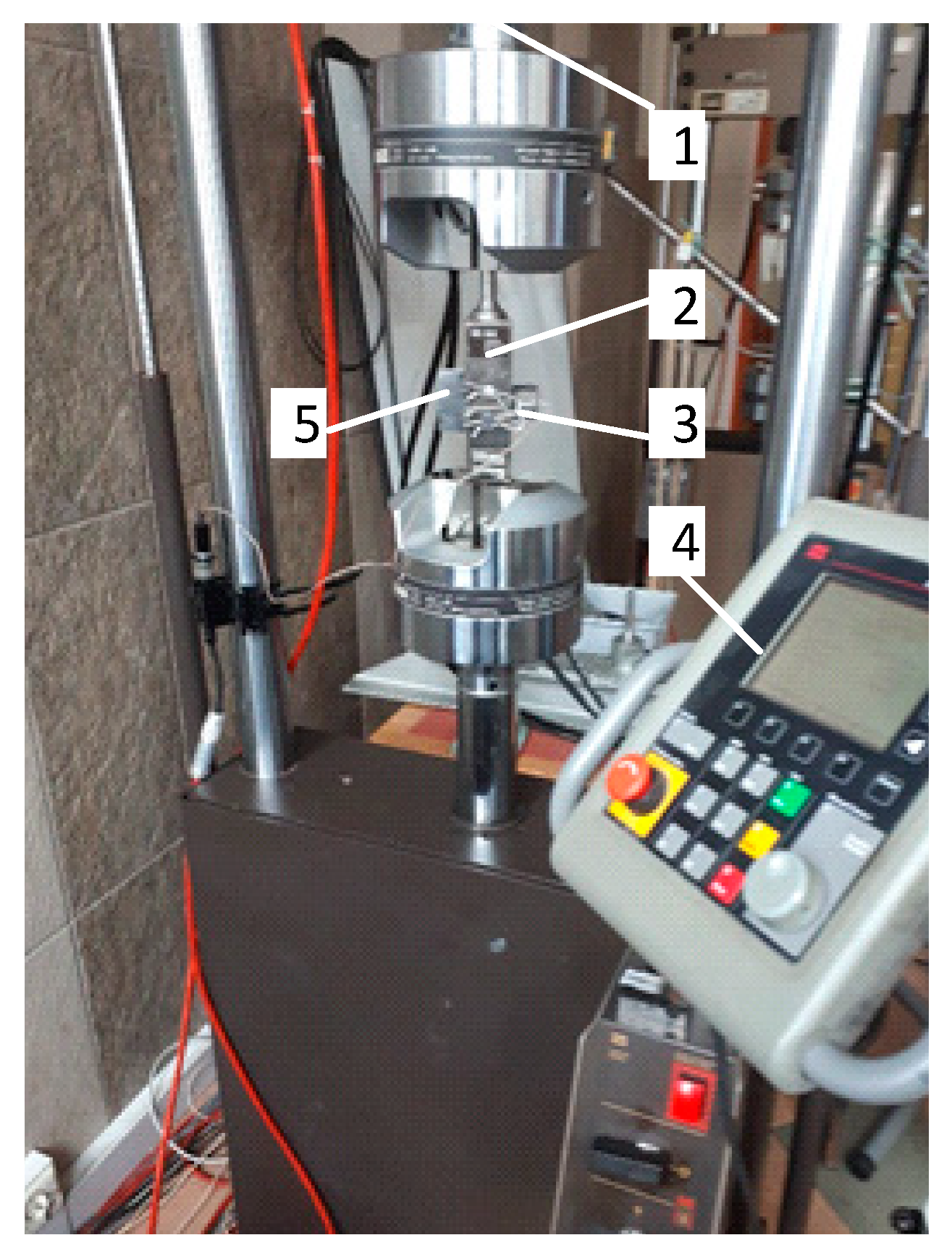
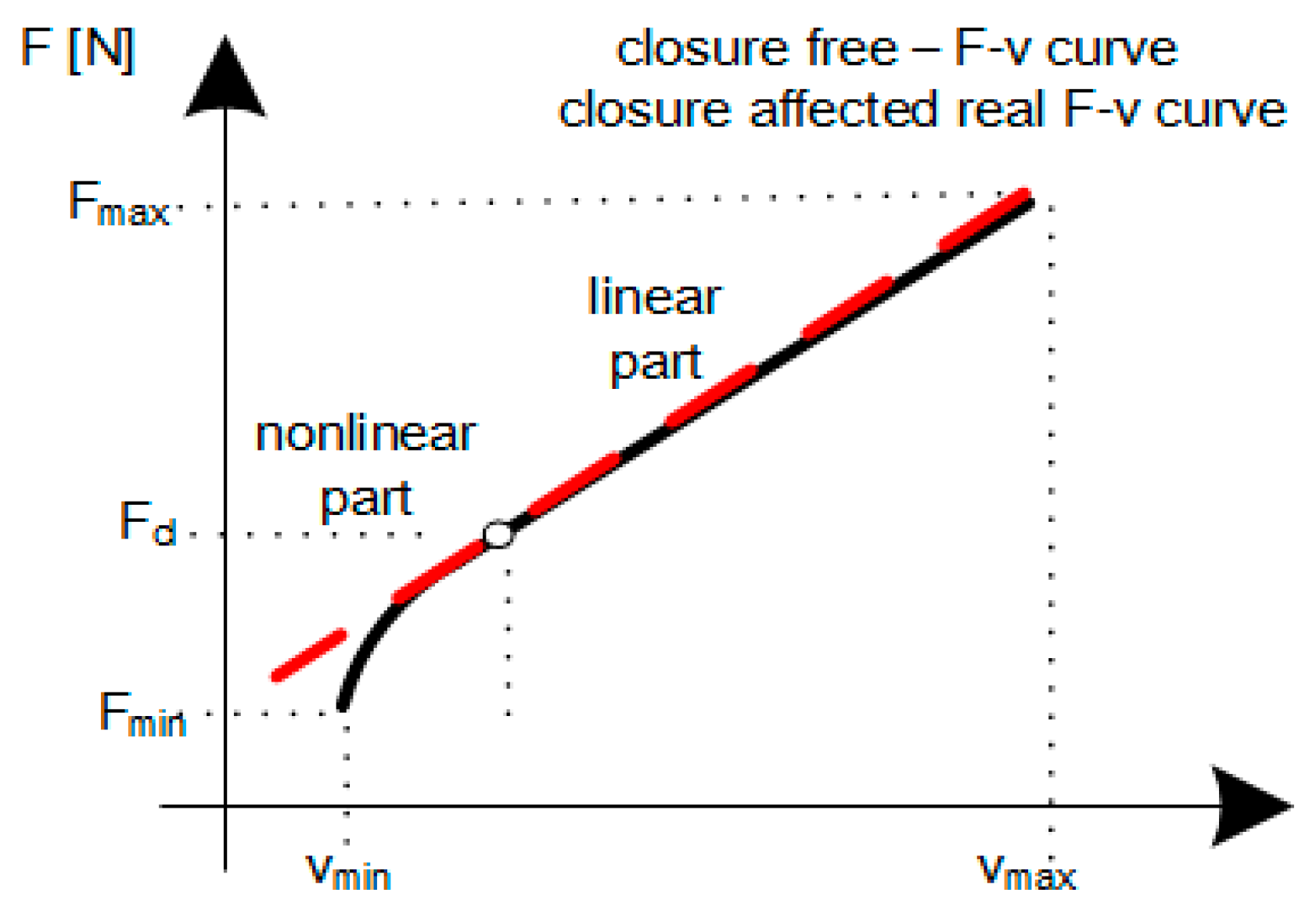

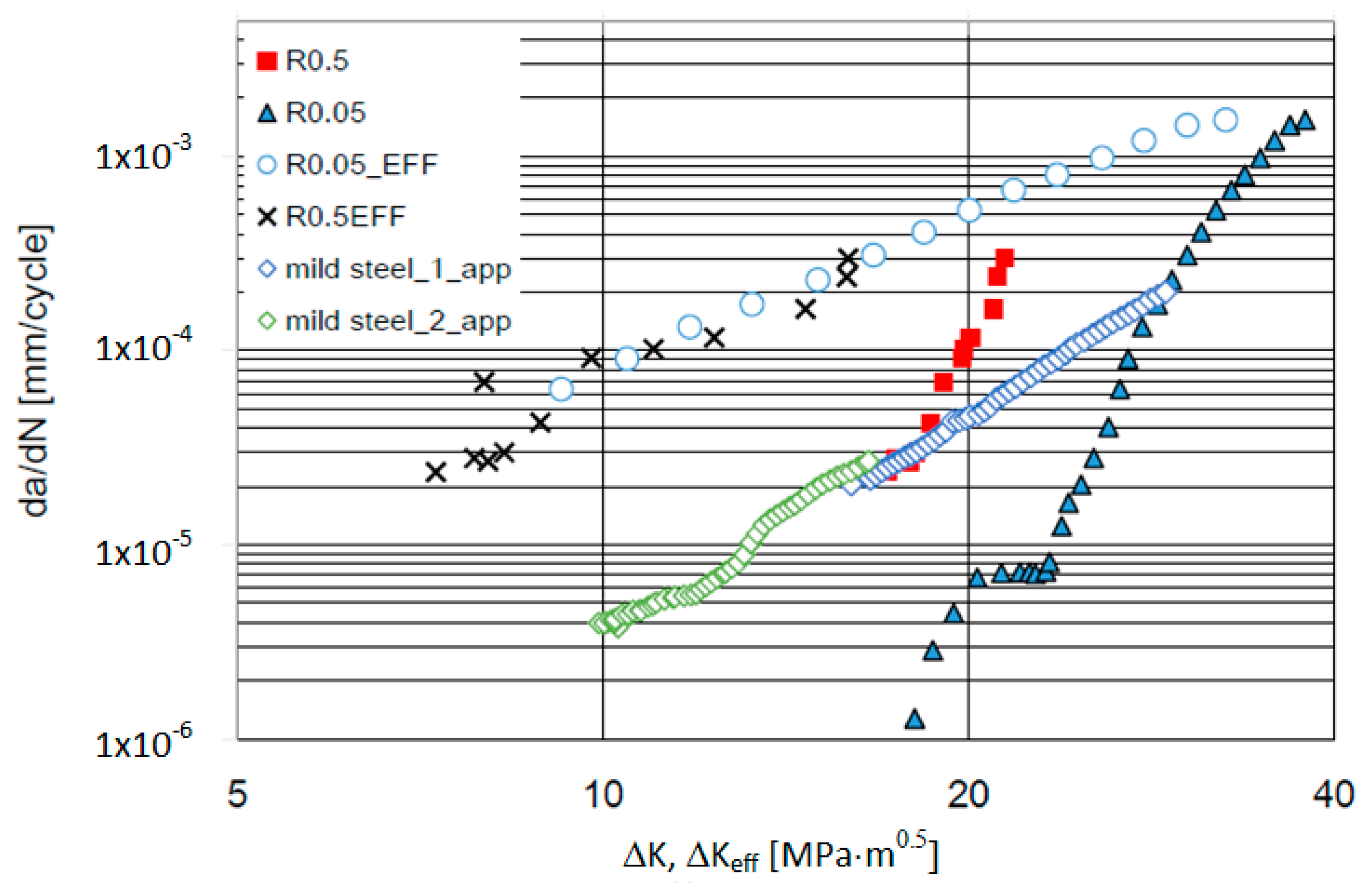
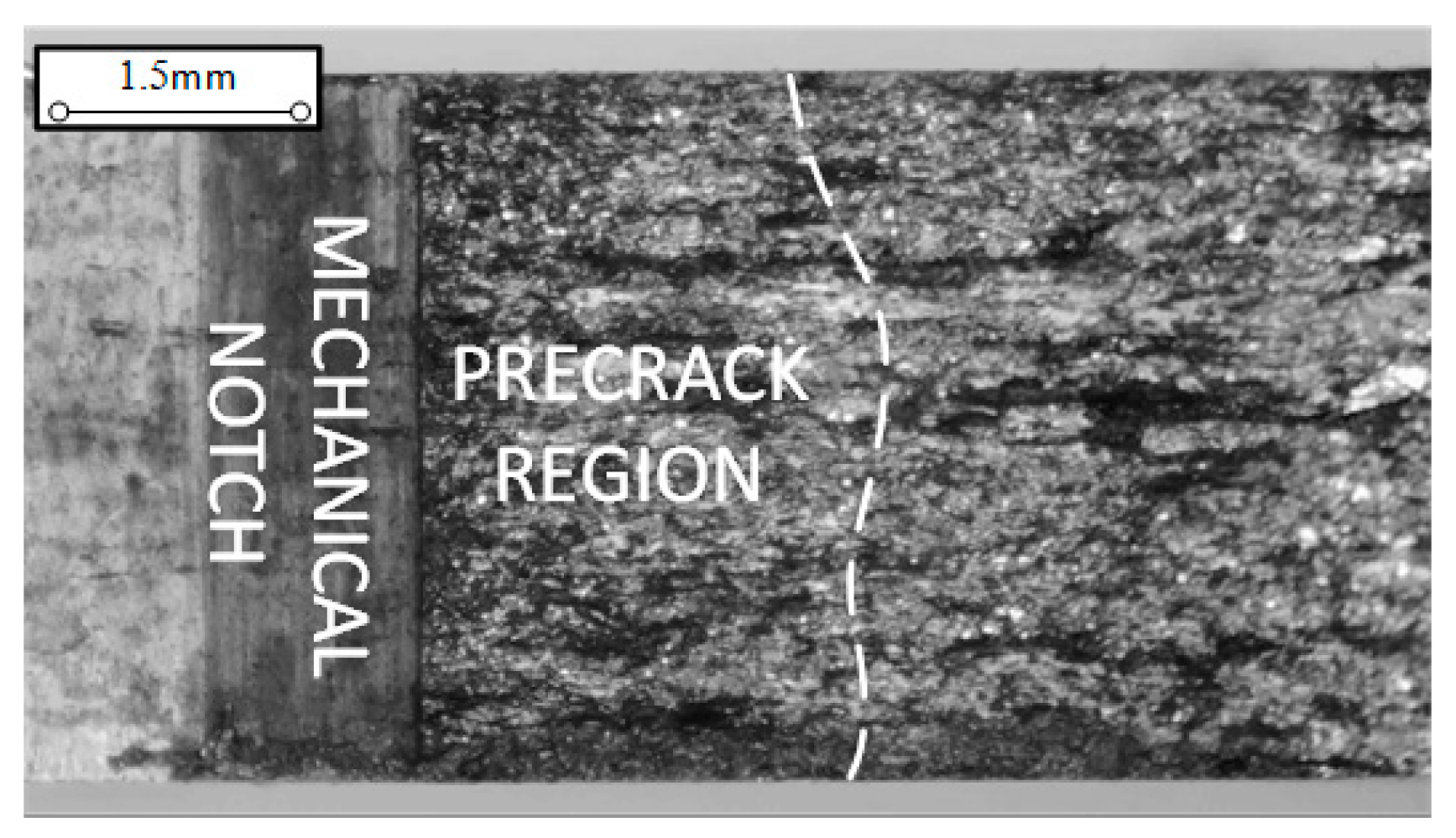
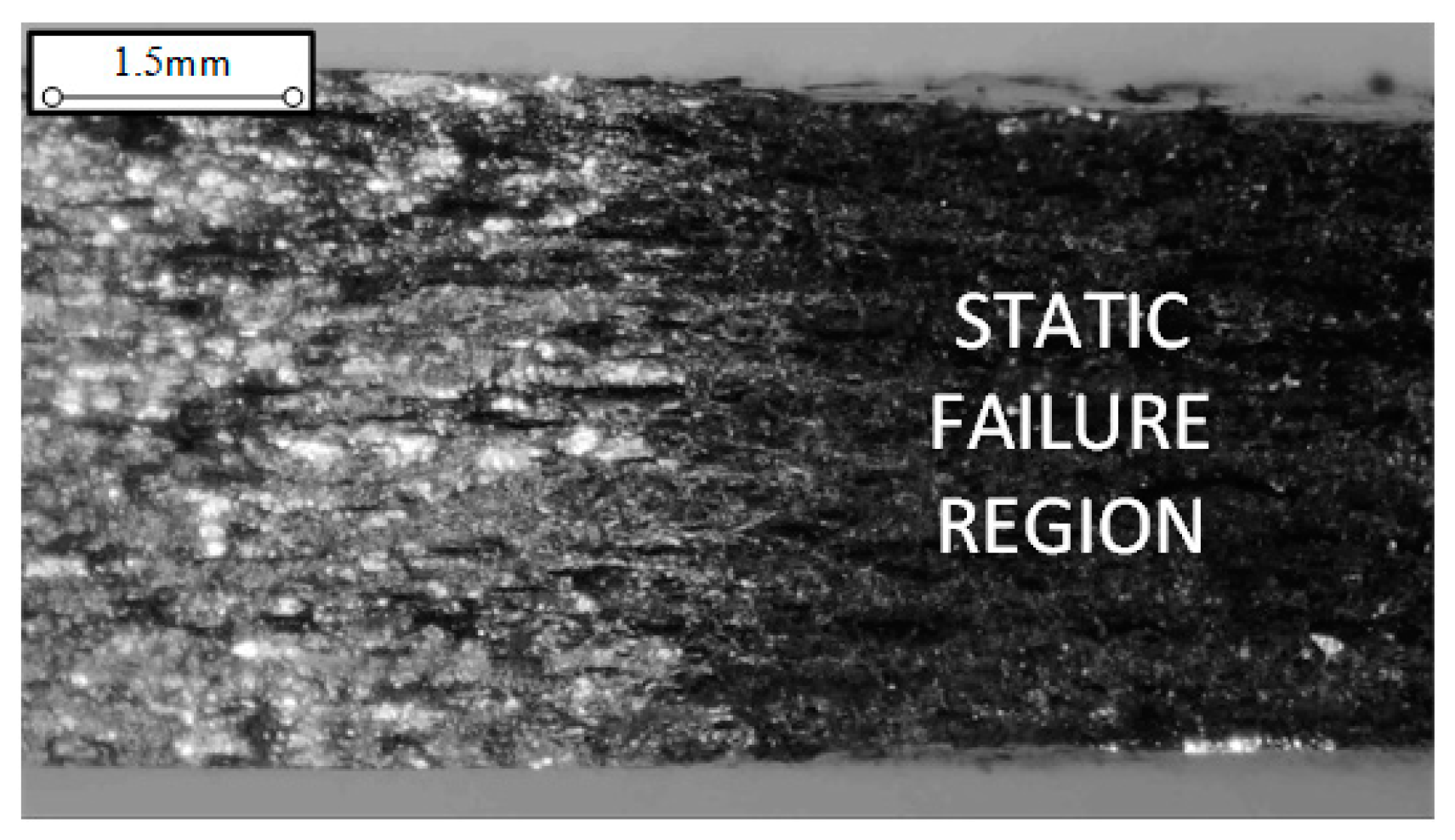
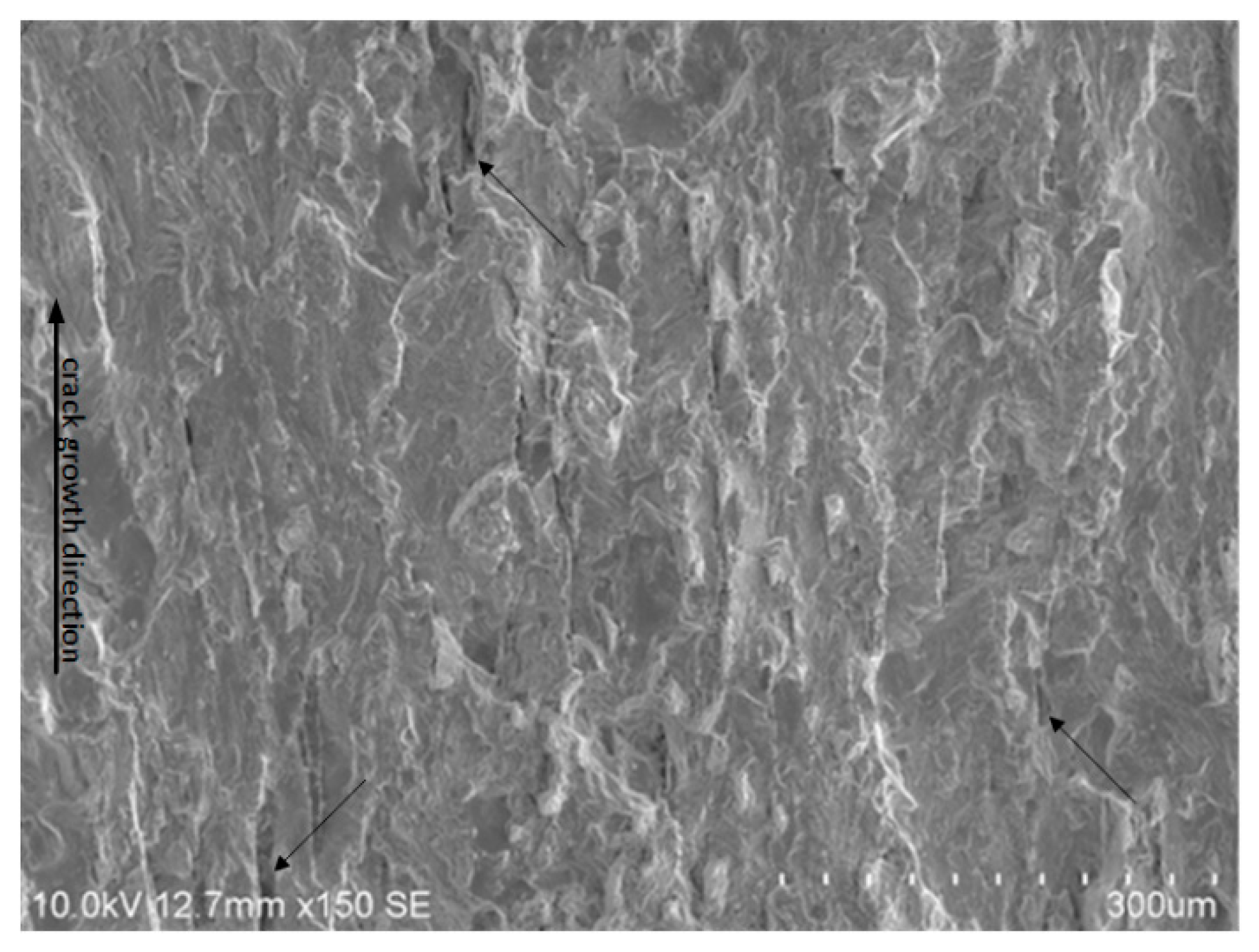
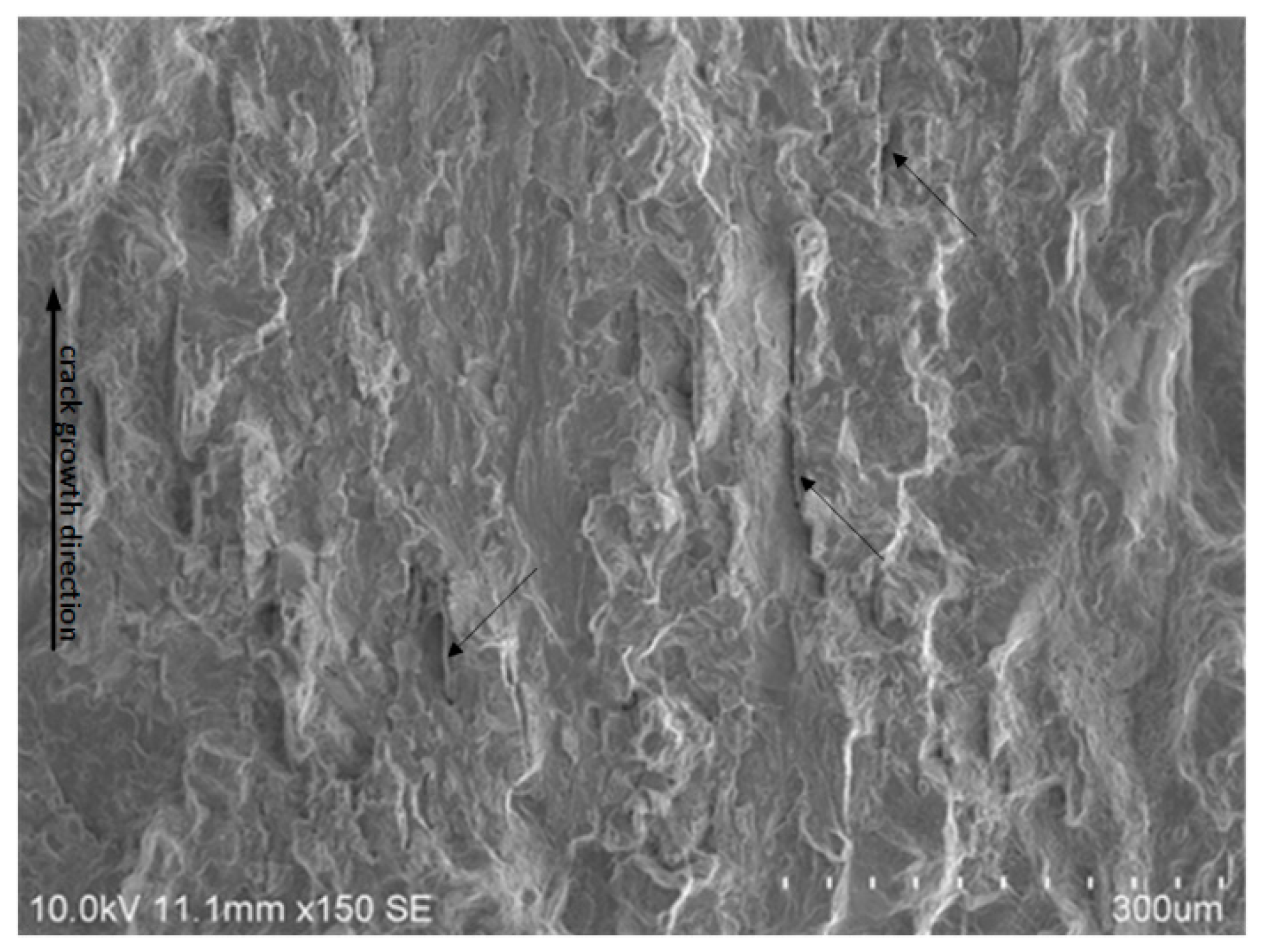

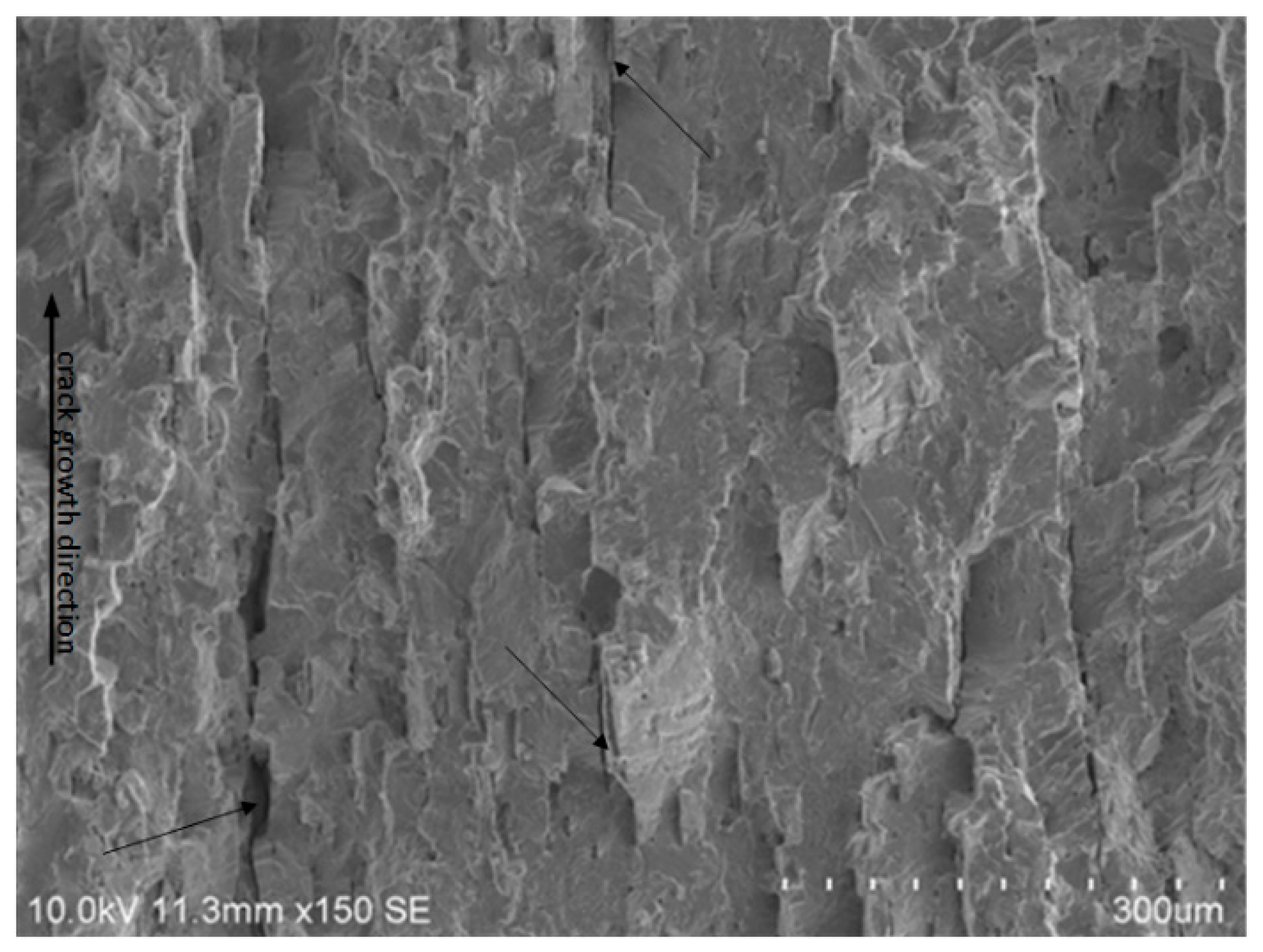
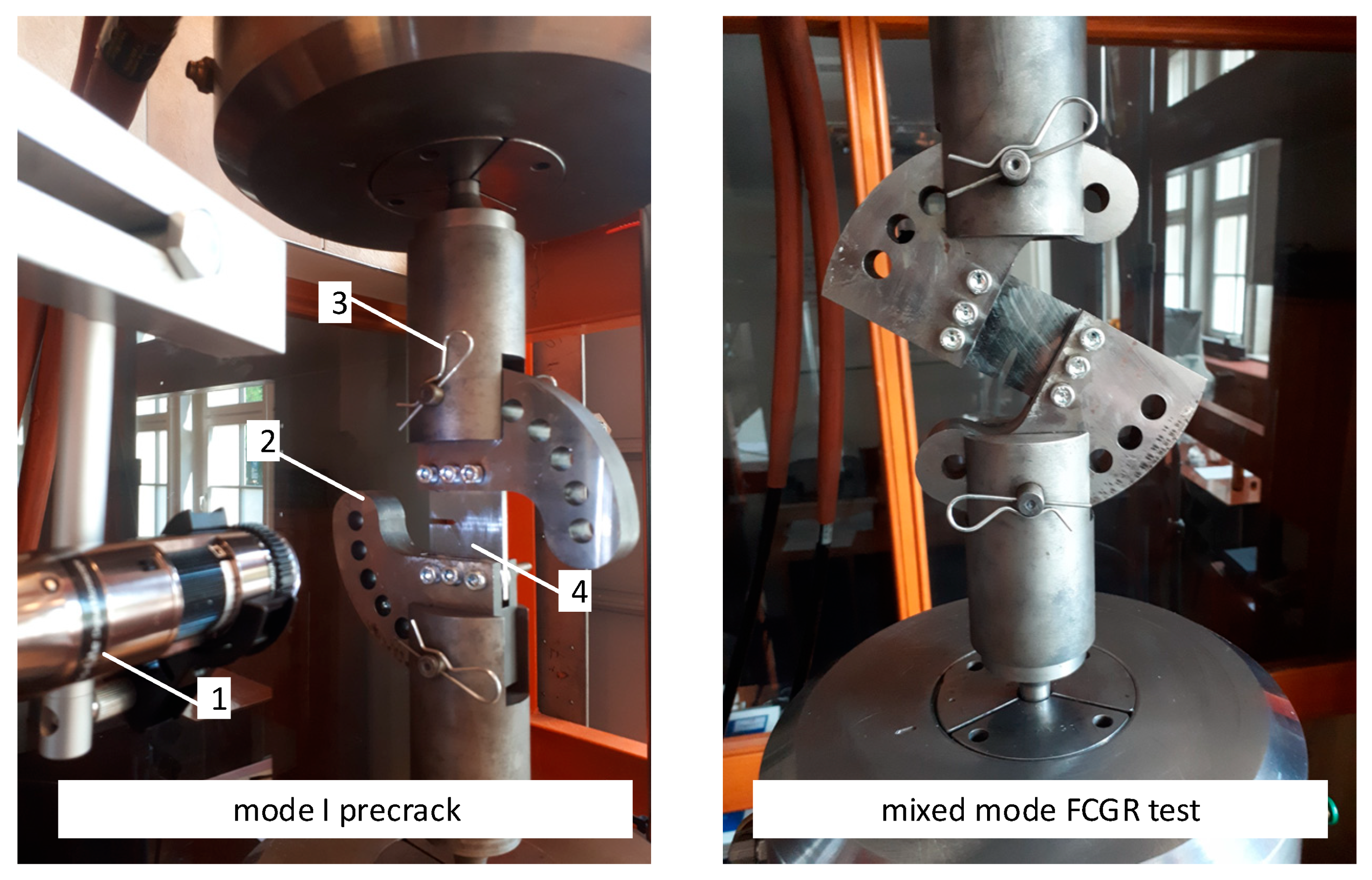
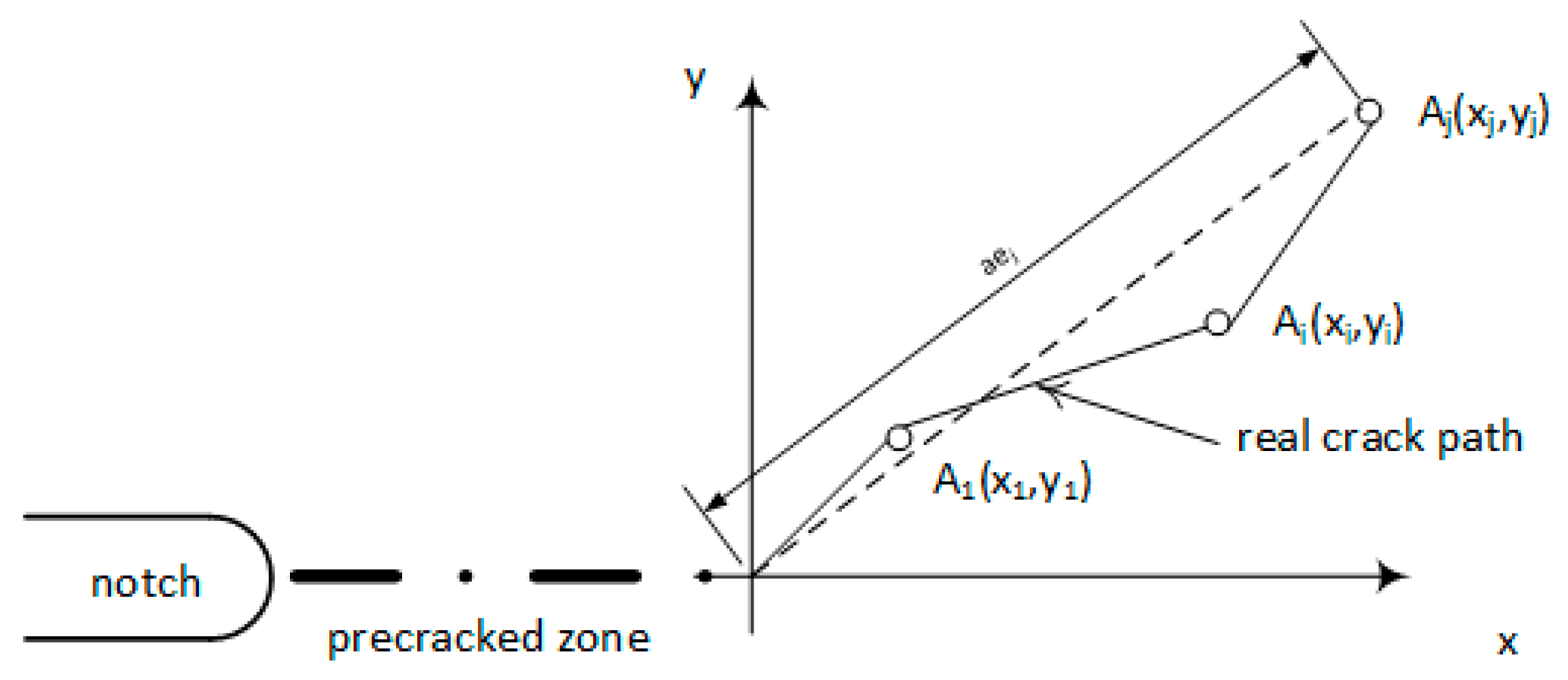
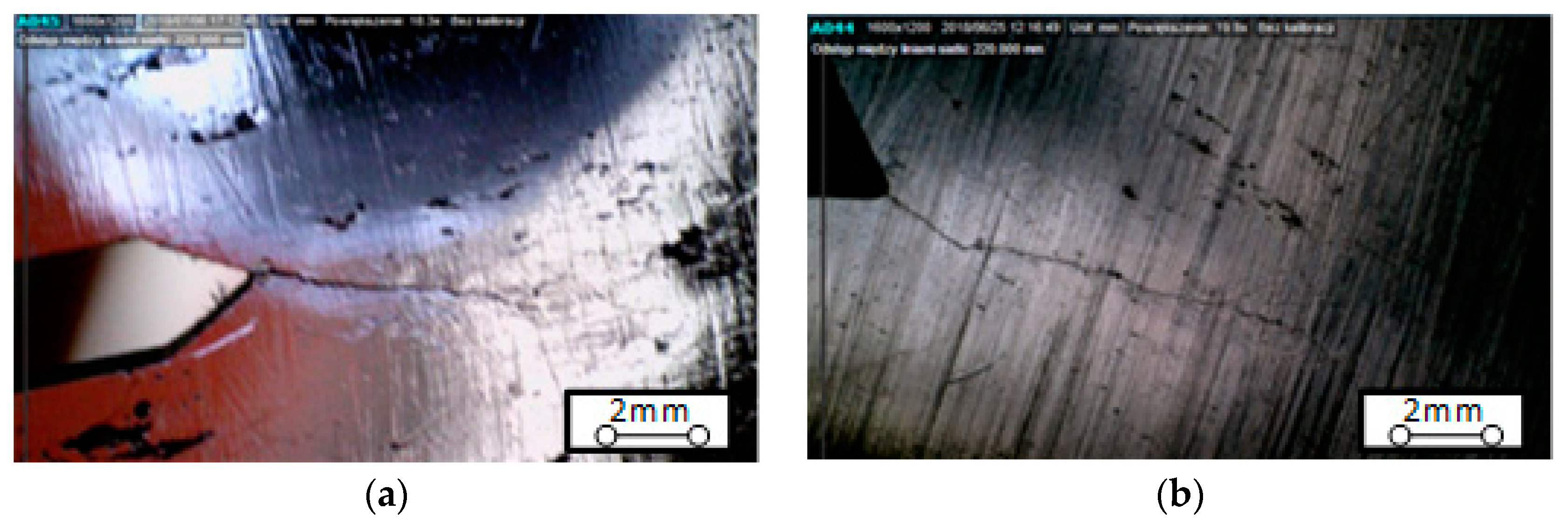
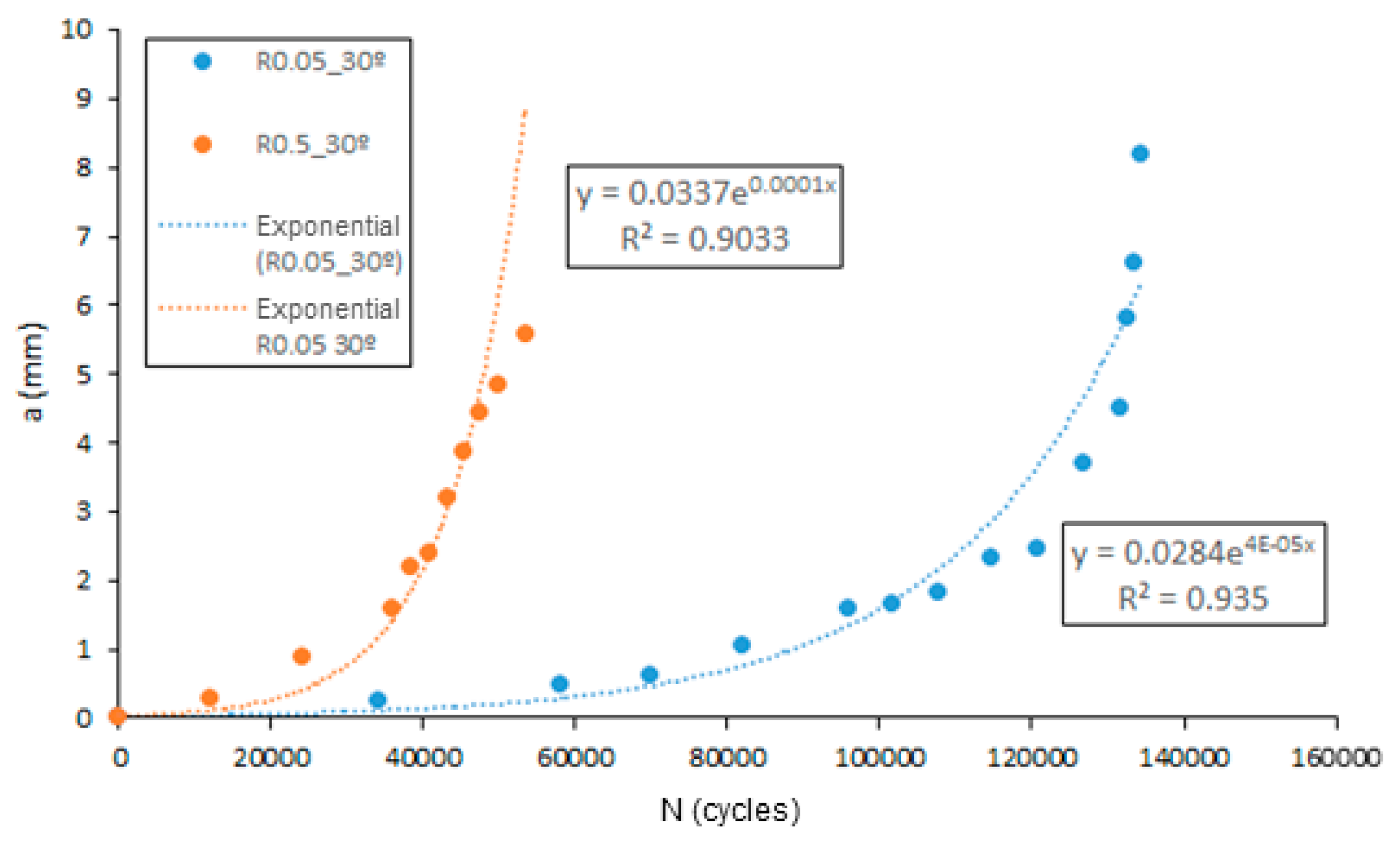
| Investigated Material | C | Mn | Si | P | S |
|---|---|---|---|---|---|
| [% by weight] | <0.01 | 0.01 | 0.07 | 0.354 | 0.045 |
| Measurement | 1 | 2 | 3 | 4 | 5 | 6 | 7 | 8 | 9 | 10 | Mean |
|---|---|---|---|---|---|---|---|---|---|---|---|
| HV10 | 175 | 167 | 165 | 171 | 170 | 159 | 172 | 162 | 170 | 188 | 170 |
| Material | fy [MPa] | fu [MPa] | E [GPa] | A [%] | Z [%] |
|---|---|---|---|---|---|
| Eiffel Bridge | 292 | 342 | 193 | 8.1 | 11.6 |
| Material | R | Crack Orientation | ΔKapp MPa·m0.5 | ΔKeff MPa·m0.5 | ||
| C | m | C | m | |||
| 0.05 | transversal direction | 8 × 10−21 | 11.105 | 1 × 10−6 | 2.035 | |
| 0.5 | transversal direction | 1 × 10−19 | 11.439 | 9 × 10−8 | 2.894 | |
| R | Fmax [N] | Fmin [N] | Number of Cycles to Failure Nf | Initial Fracture Angle [°] | Pre-Crack Length [mm] | Final Crack Length [mm] |
|---|---|---|---|---|---|---|
| 0.05 | 6500 | 325 | 134,506 | 35.7 | 1.98 | 8.2 |
| 0.5 | 10,000 | 5000 | 53,411 | 28.9 | 1.49 | 5.58 |
© 2019 by the authors. Licensee MDPI, Basel, Switzerland. This article is an open access article distributed under the terms and conditions of the Creative Commons Attribution (CC BY) license (http://creativecommons.org/licenses/by/4.0/).
Share and Cite
Lesiuk, G.; Correia, J.A.F.O.; Smolnicki, M.; De Jesus, A.M.P.; Duda, M.; Montenegro, P.A.; Calcada, R.A.B. Fatigue Crack Growth Rate of the Long Term Operated Puddle Iron from the Eiffel Bridge. Metals 2019, 9, 53. https://doi.org/10.3390/met9010053
Lesiuk G, Correia JAFO, Smolnicki M, De Jesus AMP, Duda M, Montenegro PA, Calcada RAB. Fatigue Crack Growth Rate of the Long Term Operated Puddle Iron from the Eiffel Bridge. Metals. 2019; 9(1):53. https://doi.org/10.3390/met9010053
Chicago/Turabian StyleLesiuk, Grzegorz, José A. F. O. Correia, Michał Smolnicki, Abílio M. P. De Jesus, Monika Duda, Pedro A. Montenegro, and Rui A. B. Calcada. 2019. "Fatigue Crack Growth Rate of the Long Term Operated Puddle Iron from the Eiffel Bridge" Metals 9, no. 1: 53. https://doi.org/10.3390/met9010053
APA StyleLesiuk, G., Correia, J. A. F. O., Smolnicki, M., De Jesus, A. M. P., Duda, M., Montenegro, P. A., & Calcada, R. A. B. (2019). Fatigue Crack Growth Rate of the Long Term Operated Puddle Iron from the Eiffel Bridge. Metals, 9(1), 53. https://doi.org/10.3390/met9010053










